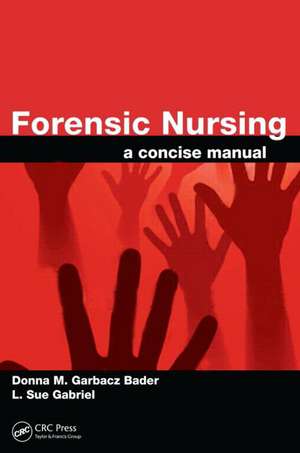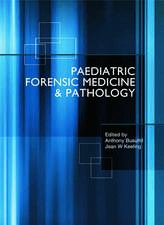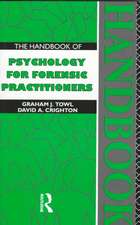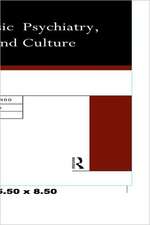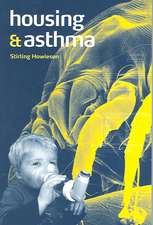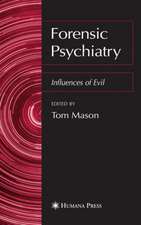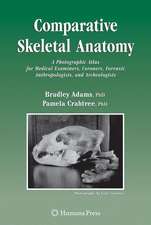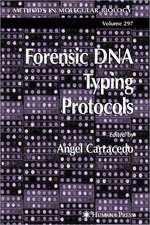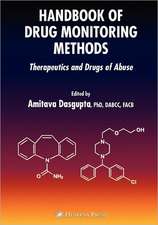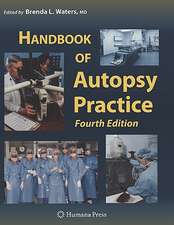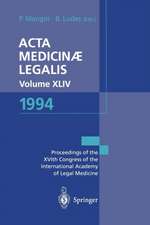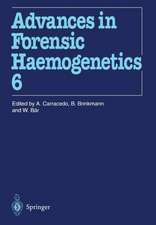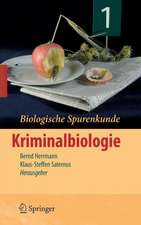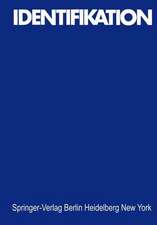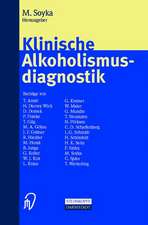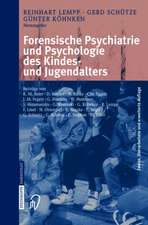Forensic Nursing: A Concise Manual
Editat de Donna M. Garbacz Bader, L. Sue Gabrielen Limba Engleză Paperback – 26 oct 2009
The First Forensic Nursing Text to Offer a Full Range of Instructor’s Materials
The book begins with an introduction to the fields of forensic nursing and forensic science. It discusses crime scene and death investigation, evidence collection, autopsies, legal issues, and ethics. It examines the nursing process as an organizational tool for identifying both the medical needs of the victim and the legal aspects of crime scene investigation. The authors pinpoint the role of the forensic nurse in an array of incident scenarios, including nursing home death, excited delirium syndrome, blunt and sharp force injuries, gunshot wounds, asphyxia, child abuse, sexual assault, and intimate partner violence. They also explore human trafficking and the forensic nurse’s role in mass disasters. Lastly, the book provides emergency room recommendations, discusses profiling and forensic anthropology, and offers guidance on working with grieving family members.
Using a succinct outline format, the text is complemented by illustrative flowcharts and references in each chapter for further study. With contributions by notable forensic specialists, this volume shows the potential of this exciting new field and demonstrates how forensic nurses can make a difference in their communities and their profession.
Preț: 707.86 lei
Preț vechi: 863.24 lei
-18% Nou
Puncte Express: 1062
Preț estimativ în valută:
135.45€ • 141.78$ • 112.74£
135.45€ • 141.78$ • 112.74£
Carte tipărită la comandă
Livrare economică 31 martie-14 aprilie
Preluare comenzi: 021 569.72.76
Specificații
ISBN-13: 9781420067309
ISBN-10: 1420067303
Pagini: 462
Ilustrații: 90 b/w images and 6 tables
Dimensiuni: 156 x 234 x 25 mm
Greutate: 0.66 kg
Ediția:1
Editura: Taylor & Francis
Colecția CRC Press
Locul publicării:Oxford, United Kingdom
ISBN-10: 1420067303
Pagini: 462
Ilustrații: 90 b/w images and 6 tables
Dimensiuni: 156 x 234 x 25 mm
Greutate: 0.66 kg
Ediția:1
Editura: Taylor & Francis
Colecția CRC Press
Locul publicării:Oxford, United Kingdom
Public țintă
Academic, Professional, and Professional Practice & DevelopmentCuprins
Forensic Nursing. Forensic Nursing Today. Forensic Nursing Education Guidelines and Qualifications. Educational Foundation for Forensic Nursing Practice. Forensic Science. Coroners, Medical Examiners, and Forensic Pathologists. Cause, Manner, and Mechanism of Death. Crime Scene Investigation. Forensic Nursing Crime Scene Investigation. Establishing Time of Death and Injury: Forensic Nursing Practice and Responsibility. Chain of Custody and Identification, Collection, and Preservation of Evidence: Major Concepts of Forensic Nursing. Significance of an Autopsy. The Nursing Process. Forensic Nursing and the Law. Forensic Nurse as an Expert Witness. The Perpetrator: A Victim and a Patient. Ethics and Forensic Nursing Practice. Psychosocial Aspects of Crime. Deaths in Nursing Homes. Excited Delirium Syndrome (EDS). Blunt Force Injuries. Sharp Force Trauma. Gunshot Wounds. Asphyxia. Child Abuse. Sexual Assault. Intimate Partner Violence. Cyberspace Crimes Against Children. Human Trafficking. Mass Disasters. Additional Violence in Society. Emergency Department Dos and Don’ts. Bridging the Gap Between the Living and the Nonliving. Profiling. From Crime Scene to Morgue: The Field of Forensic Anthropology. Appendix: Medicolegal Death Scene Investigation: Guidelines for the Forensic Nurse Death Investigator (FNDI). Index.
Notă biografică
Donna Garbacz Bader and Sue Gabriel are associate professors at Bryan LGH College of Health Sciences, School of Nursing in Lincoln, Nebraska.
Descriere
The forensic nurse has a powerful role in medical-legal investigations. This volume presents practical information directed at the range of activities that forensic nurses perform. It discusses crime scene and death investigation, evidence collection, autopsies, legal issues, and ethics. The authors pinpoint the role of the forensic nurse in an array of incident scenarios, provide emergency room recommendations, discuss profiling and forensic anthropology, and offer guidance on working with grieving family members. Using a succinct outline format, the text is complemented by illustrative flowcharts and references for further study.
